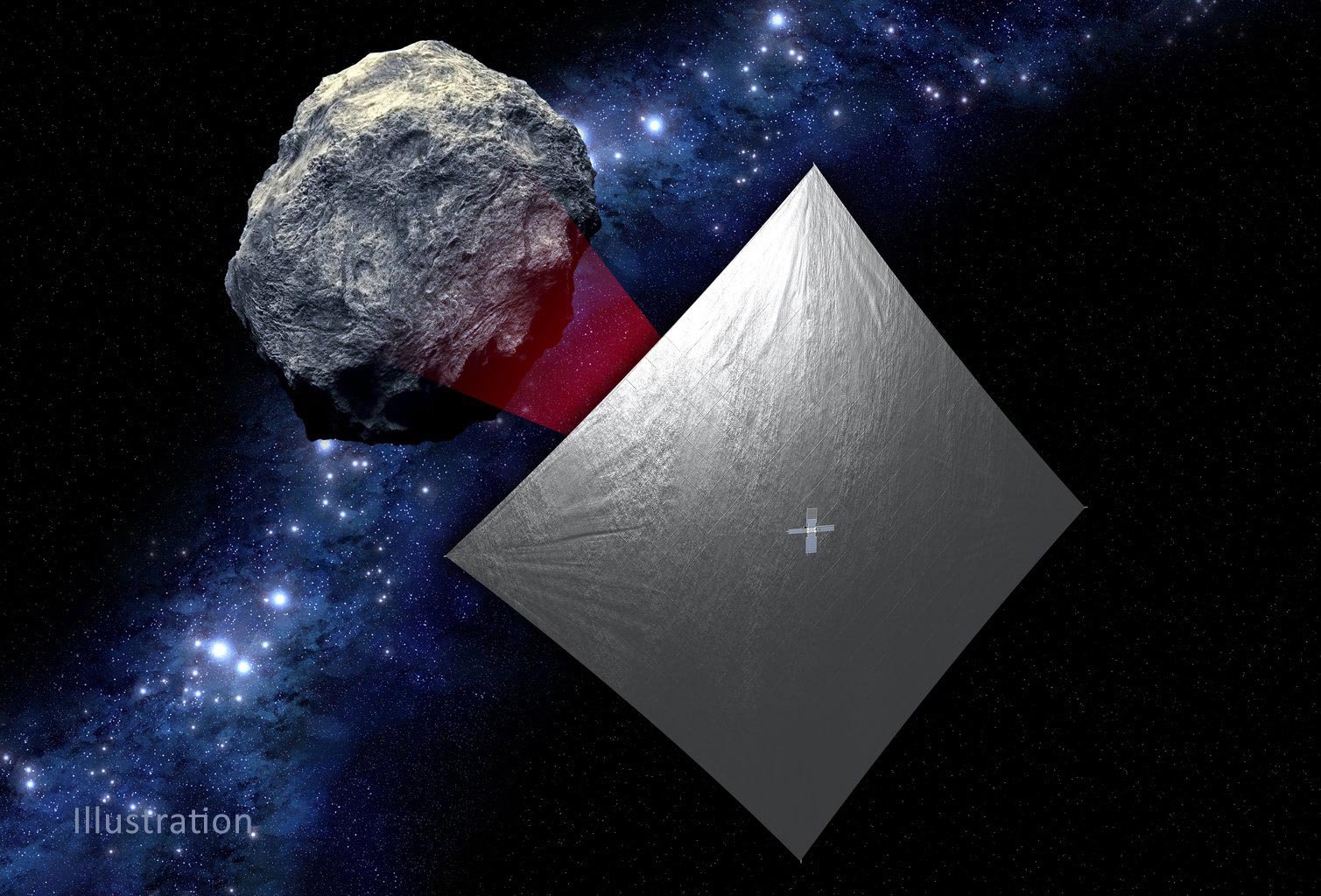
It will get there by unfurling a solar sail to harness solar radiation for propulsion, making this the agency’s first deep space mission of its kind.
The target is 2020 GE, a near-Earth asteroid (NEA) that is less than 60 feet (18 meters) in size.The spacecraft will use its science camera to get a closer look, measuring the object’s size, shape, rotation, and surface properties while looking for any dust and debris that might surround 2020 GE.
Because the camera has a resolution of less than 4 inches (10 centimeters) per pixel, the mission’s science team will be able to determine whether 2020 GE is solid – like a boulder – or if it’s composed of smaller rocks and dust clumped together like some of its larger asteroid cousins, such as asteroid Bennu.NEA Scout is composed of a small, shoebox-sized CubeSat (top left) and a thin, aluminum-coated solar sail about the size of a racquetball court (bottom left).After the spacecraft launches aboard Artemis I, the sail will use sunlight to propel the CubeSat to a small asteroid (as depicted in an illustration, right).
2020 GE was first observed on March 12, 2020, by the University of Arizona’s Catalina Sky Survey as part of its search for near-Earth objects for NASA’s Planetary Defense Coordination Office.Developed under NASA’s Advanced Exploration Systems Division by Marshall Space Flight Center in Huntsville, Alabama, and JPL, NEA Scout is a science and technology demonstration mission that will enhance the agency’s understanding of small NEAs.The Chelyabinsk meteor was caused by a small asteroid about 65 feet (20 meters) in diameter – it exploded over the Russian city on Feb.
It will also demonstrate solar sail technology for deep space encounters.
When released from its dispenser after launch, the spacecraft will use stainless steel alloy booms to unfurl a solar sail that will expand from a small package to a sail about the size of a racquetball court, or 925 square feet (86 square meters).
The sail will provide most of NEA Scout’s propulsion, but small cold-gas thrusters with a limited propellant supply will also assist with maneuvers and orientation.
“The genesis of this project was a question: Can we really use a tiny spacecraft to do deep space missions and produce useful science at a low cost?” said Les Johnson, the mission’s principal technology investigator at Marshall.In September 2023, asteroid 2020 GE will make a close approach with Earth, and with a gravitational assist from the Moon, NEA Scout will have gathered enough speed to catch up.“NEA Scout will accomplish probably the slowest flyby of an asteroid ever – at a relative speed of less than 100 feet [30 meters] per second,” said Castillo-Rogez.NEA Scout sets the stage for future solar sails: NASA’s Advanced Composite Solar Sail System will demonstrate novel, lightweight booms to deploy a solar sail from a CubeSat following its 2022 launch.After that, Solar Cruiser, an 18,000-square-foot (nearly 1,700-square-meter) solar sail technology demonstration, will use sunlight to travel toward the Sun in 2025, enabling future missions to better monitor space weather.
